Anatomy of an Era: Calvin Jones, Part 3
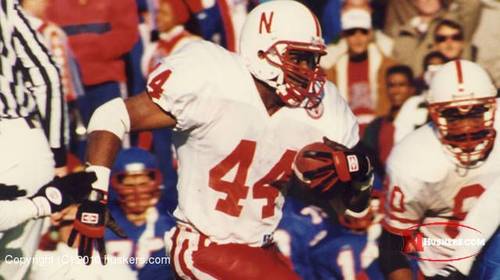
Excerpted from Chapter 97, No Place Like Nebraska: Anatomy of an Era, Vol. 2 by Paul Koch
Anatomy of an Era: Calvin Jones, Part 3
Q: Delving even further, it’s becoming apparent to me that it takes a diverse group of individuals merging together into a top notch team rather than a singular, homogeneous mix of guys. You had your Chicago guys, your Jersey guys, your Texas guys, Florida guys, etc. What was it about the Omaha guys? Is there any way of defining an ‘Omaha guy’?
CJ: If you wanted to define an Omaha guy he’s kind of ‘middle of the road’. He’s not quite city, but he’s not quite country. (laughs) Just kind of in the middle.
But I think that’s another attribute of Coach Osborne’s, because here was a coach who could take guys from Western Nebraska who had never been around minorities, and he could take kids from Louisiana and California and Florida who had never been around whites, and he could bring them all together and make them fight for the same thing.
Q: How did he do it?
CJ: That’s why he’s got the Doctorate in Psychology. (laughs) People never think about that, but he could take guys from all over and who maybe had not have ever interacted with a different race or minority group, but he could combine them and make them fight for the same thing.
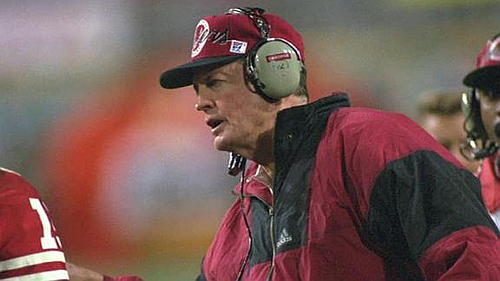
Q: Do you ever remember him or the staff ever doing or saying anything to bring everyone together?
CJ: I can’t exactly remember what it was, but at least the guys I played with, we knew Nebraska football.
And Coach Osborne was like E.F. Hutton: when he talked people listened, because he had a proven track record. So you know, if we were getting a little big-headed or whatever he could say, “It happened to us in 1982.” Well, most of us knew what happened in 1982 and we didn’t want that to happen to us.
Q: Drawing on those heartbreaking Husker losses you felt as a kid?
CJ: Right. So he would use examples, you know. And he was just real mellow, so he could put it in a way (because of the Doctorate in Psychology) to make you understand.
I’ll give you an example: the reason I redshirted my freshman year was because Derek Brown was a Prop 48 and he had already sat out a year. So Coach Osborne and Coach Solich met with me when they were going to tell me that they were going to redshirt me, and they said, “Well, Derek is a Prop 48 and he sat out last year. And if a guy sits out two years he might not ever come back and be the type of player that he would be.” Because we were dead even: he and myself.
Q: You guys were known as the ‘We-Backs’ for a while, weren’t you?
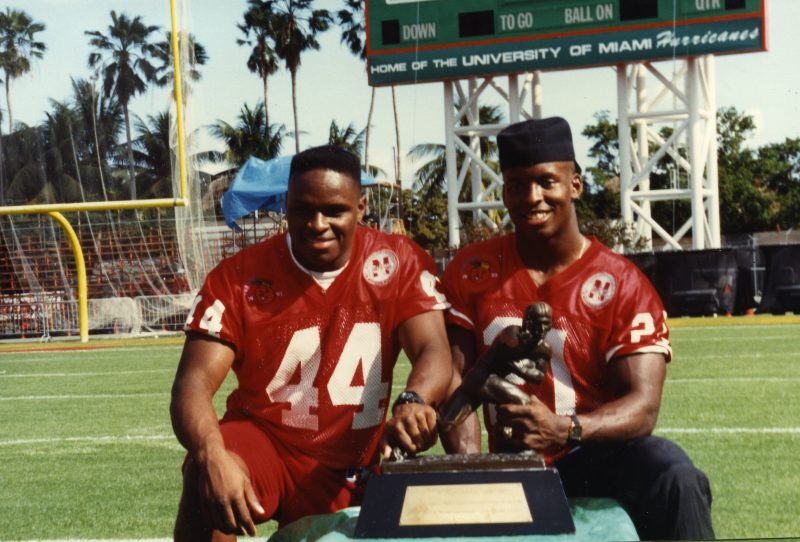
CJ: Right, my sophomore year. So he says, “With you coming in we think we’ll redshirt you and give you the chance to kind of get adjusted to college football and the speed of the game.” Now, I didn’t understand it at the time and I didn’t want to do that, but looking back on it? It was one of the best things.
Just like when we became the We-Backs. Derek and I -I remember Derek and I going in and calling a meeting with Coach Osborne. (One guy may have had the chance to win the Heisman Trophy, but he’s got to play) So Derek and I made a pact, and we went in there and talked to Coach Osborne. And Coach Solich was in there, too. And we told Coach, “We respect whoever you want to be the starting running back.”
And Coach Osborne, he just kind of shook his head up and down, “Uh huh. Yeah…” And then he said, “I appreciate you guys. It seems like you guys have really given this a lot of thought. That’s very commendable. But I think what I’m going do is what’s best for the team, and what’s best for the team now is that both of you guys are going to play.” (laughs)
And it was just that subtle. And we were, “Okay. Well, I guess we’re going to be rotating.” (laughing)
Q: So you walked out of there a little disappointed, but at least you understood his take on it?
CJ: Oh yeah, because we wanted it our way. It was coming from 19, 20 year old kids, now.
And that’s another thing, Coach Osborne had always been like that: no one is bigger than the team. You can look at the history of Nebraska football. He was the coach and that’s the way it was.
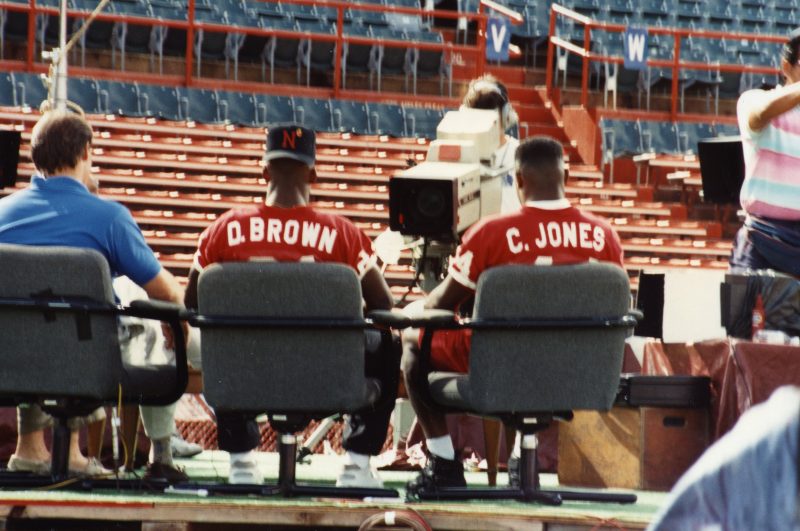
Q: You know what’s funny, Calvin? The fact that both of you guys -not just one– but both of you came together and agreed to have that meeting instead of just you or Derek alone going in and making that demand. In my mind that showed some degree of unity, of team-mindedness, of respect for one another despite the fact each of you wanted an opportunity to shine a little brighter. That speaks volumes of you guys!
CJ: And really, thinking back, we were the first college duo of running backs to each rush for a thousand yards. Derek and I were the first to both rush for a thousand yards in college football history.
Q: Amazing. And hey, didn’t you have that dog, a chocolate Visla?
CJ: Oh no, he was like golden-reddish. But yes, he was a Visla.
Q: What was his name again?
CJ: His name was… Heisman. (laughs)
Q: Being a Nebraska running back, would you guys talk about winning the Heisman Trophy amongst yourselves? Was that the ultimate goal, from a personal standpoint?
CJ: You know, we never really talked about the Heisman because of the kind of coaches we were under. We were more about the team, but we knew that if a guy –like my junior year I ended up getting hurt– I think it was two-to-one odds for me to win the Heisman. But there was never any talk. That was one of the goals I had as an individual, but as a team we just never talked about the Heisman or any type of award, because like Coach Solich would tell us, “If we do what we need to do those things will come. We don’t need to worry about that.” Those things would take care of themselves.
Q: I remember when we had that makeshift weight room in the old fieldhouse as we were just finishing up the weight room rehabilitation, and one summer night you came by with this dog you’d just gotten. I think it was the first Visla I had ever seen and I asked what its name was, and you said, “Heisman.” And I thought to myself, “Aha, Calvin’s got a goal. Calvin’s got a goal, now….” (laughs)
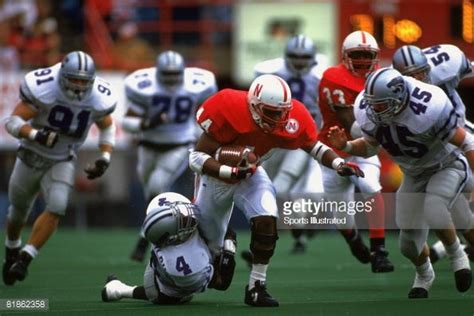
CJ: The reason I named him Heisman wasn’t because it mattered if I ever won the Heisman, it was because I had plenty of ‘Heisman’s Trophies’ out in the backyard. (laughs)
Q: Good one, Calvin! (laughs) You roomed with Brett Popplewell for a while, right? He told me the story of the time Heisman got into some of Brett’s vegemite, which leads me to ask if you have any fond or funny off-field recollections from back then?
CJ: Well, there were quite a few. I guess the one was when Brett Popplewell… when he had moved in (it was always just me and Heisman, and that dog was like the only child). Well, when Brett moved in Heisman was kind of jealous. And Heisman had a mind of his own, (laughs) and I think at first Brett moved downstairs. I had a duplex, and Brett moved down in the basement.
Well, Heisman was jealous that Brett had moved in, so I get a call from Brett telling me that Heisman had taken a dump right in the middle of his bed! (laughs) It was a good time. We had some good times. But old Heisman, he was a little jealous of Brett.
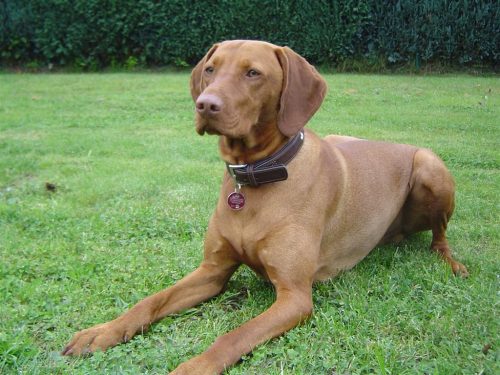
Q: So your last game: Florida State… what sticks out in your mind about that incredibly dramatic and historic game?
CJ: Well, really and honestly, the ‘invisible clip’ call on Corey Dixon’s punt return. That game, I can remember that one. I can remember when William Floyd had supposedly went over and scored and fumbled. I remember Coach Osborne just going up and down on the sideline with one or two seconds left. There were just a lot of different moments. I can remember Trev just bulldozing Charlie Ward. So there’s just a lot of moments from that game that are burned into my mind.
Q: Did you go into that game injured?
CJ: No, I got injured in the game. It was a separated shoulder.
Q: Was that in the second or third quarter?
CJ: I think late second.
Q: I recall watching you walk off the field and thinking to myself, ‘Uh-oh, this isn’t good.’ And that being your last game, have you reflected on that much? What it meant to you to finish your Husker career in that game?
CJ: I guess it weighed on me for a couple of years, especially since I had decided to leave. And then the following year we won the national championship.
And the only thing that really helped me get over that was when I was with the Packers and we won the Super Bowl. It took me a while. I mean, I beat myself up for a couple of years about what a dumbass I was to leave. (laughs)
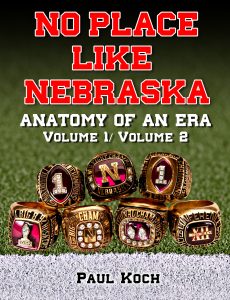
Available on Amazon.com
Q: (laughing) What was it, the financial opportunity that drew you away?
CJ: That was not a good decision for me. I was probably listening to some people that didn’t have my best interests at heart. But then again, when I left I was twenty-three (years old), so I was a little older. It was just a decision… I should have come back to school. That way I would have been able to graduate. I would have been able to get my degree. I would have been a part of the national championship team. So looking back, that’s one of those decisions you wish you could have had back.
Q: Do you recall watching the next year when we beat Miami for the championship?
CJ: Oh, yeah! I watched it, and when they got back we partied hard! (laughs) My first year in the pros I had bought a house here in Lincoln. I might not have won the national championship, but we sure partied like I did.
Q: Did you go to Green Bay right away?
CJ: No, I went to L.A. The L.A. Raiders. Then we moved to Oakland. And then my third season I got traded to Green Bay.
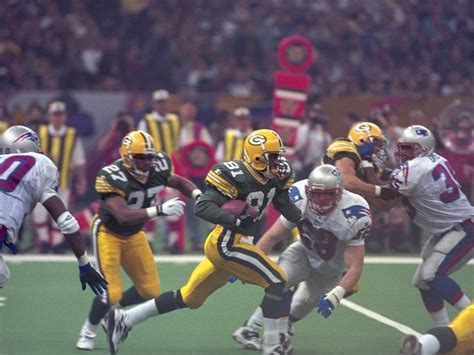
Q: So in the process of being a professional and talking to other guys and their experiences at other schools, do you recall any glaring comparisons or contrasts?
CJ: The thing is, I went to L.A. and a lot of the vets were like, “Where are you from?” And I was like, ‘Omaha.’ And they were like, “Mutual of Omaha?” (laughs) And I said, ‘I’m gonna explain to you exactly where Omaha is: it’s about 50 miles northeast of the school with the little red ‘N’ on the helmet. You know where that is, don’t you? Well, that’s near Omaha.’ (laughs)
And I tell you what, what really made my day: Keith Jackson was on the team. And one thing about the pros: everybody talks about their college team. There’s a lot of betting goes on on Saturdays about college teams. And I remember that year: it was ’96, and I remember me and Keith Jackson had a bet. And the bet was that whoever lost had to wear the other school’s colors and outfits and jerseys for a week. So I called Glenn Abbott in the equipment room and I was, ‘Glenn, I’ve got this bet and I’m gonna need some Nebraska stuff.’
And so Keith Jackson, he’s from Oklahoma and we were just woofing it up with each other. And here comes Saturday night and we go into the team meeting, and I just looked at him and told him, ‘Yeah, the stuff will be here Monday. I look forward to you wearing it.’ I had won the bet: we beat the Sooners. And he wore it! (laughs)
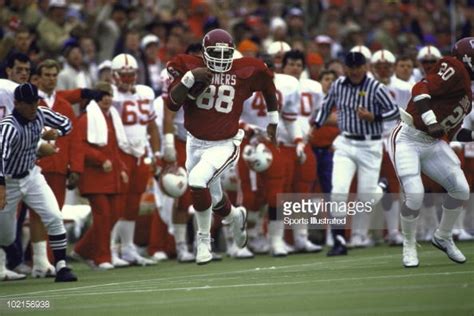
And when I was in L.A. I was with Ricky Dixon, too, who was a defensive back who’d played at Oklahoma, and we always used to jab at each other all the time.
Q: Taking those next few years into account, Calvin, you didn’t lose many bets…
CJ: Oh no. And the second year they stopped. They wouldn’t even mess with me. (laughs)
Q: So to wrap up, in your time there at the University representing yourself, your family, Omaha and the University, can you sum up that experience? What set those teams apart? What made you a better man?
CJ: I think first and foremost was Coach Osborne. It had started with him because he was the head coach.
And right behind him would be Coach Solich because I worked with him on a daily basis, and then the rest of the coaching staff and the players.
I think Nebraska taught me a lot of things, but number one was about family. It was like we were a family. All the coaches -my dad was never really around- so Coach Osborne and Coach Solich were like father figures for me. And especially a lot of us who came from the inner-cities, the urban communities, the coaches were like father figures who helped direct and guide us. At least I know for myself, and if I had to do it all over again I’d do it the same way. That was one of the good decisions I had made in coming to Nebraska.
And to sum it up: I got to live a dream. Growing up in Omaha, Nebraska watching Nebraska football, never thinking I’d ever have the opportunity to play for the Huskers. It’s gone now, but I really did play for the Huskers. And I went from being a fan to being a player, and now I’m back to being a fan.
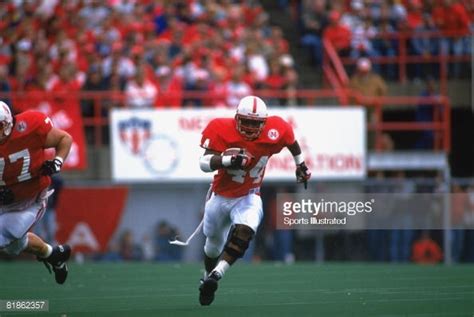
Q: Full circle, huh? In going through that cycle what is the greatest lesson you learned?
CJ: The number one thing? It’s perseverance. Perseverance and dealing with adversity. There might be some things that happen in your life, but you know what, you can get back up and keep going. I relate it to playing football. I can carry the ball and fumble the ball, but still get back in the game.
Q: A man who never quits is never defeated?
CJ: There you go. And it’s not about what we achieve in life, it’s about what we are able to overcome.
End conversation.
Jared Tomich mentioned it earlier, and Calvin solidified it with his ruminations on the proficient adjustment capabilities of the Cornhusker coaching staff: “I’ve never seen coaches who could adjust to situations like they could …the whole next series had a whole different blocking scheme and we’re running different plays… It’s hard to find a coaching staff who can make adjustments after three plays and out. Most coaches can’t make adjustments at halftime.” Call it synchronicity, call it experience, call it a shared history, everyone on that staff had done a little of this, seen a little of that throughout a lifetime immersed in the sport. Combine that with a bevy of talent, an eye for judging it and putting it in the right place, years of working through game film and game-planning chalk sessions together, and 9 times out of ten you’d see a new Husker wrinkle to exploit what the other side was allowing and/or lacking. Someone spoke earlier of the ’93 UCLA game out in Pasadena and the sideline chess game going on for the better part of three quarters until the Nebraska staff cracked the code. They were a solid crew of football hackers.
A huge hurdle, I’ve come to believe, was overcome by the spunk and the pluck inherent in the ’90 and ’91 recruiting classes who’d bonded so closely, permeating the culture, eventually having their effect on the entire team’s approach to the annual Orange Bowl’s challenge: “I think the players really took a new mental approach in going to the bowl game, going to play Miami or Florida State in Florida. I think that mentality had really changed… in the past we were already defeated.” It helped to have a few Floridians playing for the Huskers for once, with names like Tommie Frazier, Tyrone Williams, Aaron Penland, Leslie Dennis and Shevin Wiggins contributing heavily. Mix that with the homegrown Nebraskan blood and a smattering of others from across the countryside, and what you had was a collection of young men willing to take on anyone, anywhere, any place: “..there came some attitude with that… And then you’ve got not only the attitude, (but) we started getting some speed.” Mixed together with a dedicated work ethic, it was darn tough to beat.
The last thing we’ll touch upon here is the concept of Sooner Magic. I get a queasy feeling in the pit of my stomach at the mere mention of the term, because it was that hard on me as a kid. Needless to say, a good portion of the ‘70’s and 80’s left Nebraska fans in tear-filled, gut busting, angst-ridden bewilderment come Thanksgiving holiday season, and you were sweating bullets every Sooner contest until the clock ticked to nothing… no lead was safe when it came to dealing with Barry the Bootlegger’s boys. I’ll never forget sitting in the stands among the student’s Section 22 for that astounding tilt in ’86 when Sooner Tight End Keith Jackson caught a Jamelle Holieway pass without breaking stride, all the while pushing off Nebraska defender Broderick Thomas, rolling 41 yards down field and out of bounds to set up a winning field goal with only 9 seconds on the game clock, breaking the 17-17 tie. Oh, the agony. Calvin lived it too: “I’ll never forget it: Keith Jackson caught a pass one-handed on the sidelines and they kicked a like a fifty-two yarder to beat us. And we were leading them the whole game!” You’re preaching to the choir, brother. But there was a silver lining to come from it, though, because this one foe -always heavy on speed with skill to match- became a measuring stick for the Nebraska Football program. They were what the Cornhuskers hoped to become, able to waltz onto a field and pull one out no matter the score or weather conditions or injury or whatever befell them. After a season’s working out the rough spots and tweaking the schemes, a roster-full’s experience and accumulation of confidence, all that came previous merely served as a build-up to the one, great crucible experience: The OU Game. Borrowing an eye for like-kind talent, some offensive strategy, and a swagger to boot, NU became the new OU and more in the 1990’s, finally turning the tide. It was spectacular, bracketing that great 60 & 3 era with seven straight wins from ’91 through ’97. Then came the Big 12. Nebraska was the new Oklahoma, and there was no getting away from it other than running away from it. The old Big 8 foes couldn’t back-pedal fast enough; not on the field nor in the new conference’s backrooms and boardrooms.
Notable quote #2:
Calvin Jones on Running Backs Coach Frank Solich: “It’s not like we came out of high school with that talent and that ability. A lot of us were raw and he was the one who shaped and molded us… He would take the films and cut ‘em up and show us why that drill was important. There was always a reason behind the madness, why you were doing something.”
Copyright @ 2013 Thermopylae Press. All Rights Reserved.
Photo Credits : Unknown Original Sources/Updates Welcomed
Author assumes no responsibility for interviewee errors or misstatements of fact.